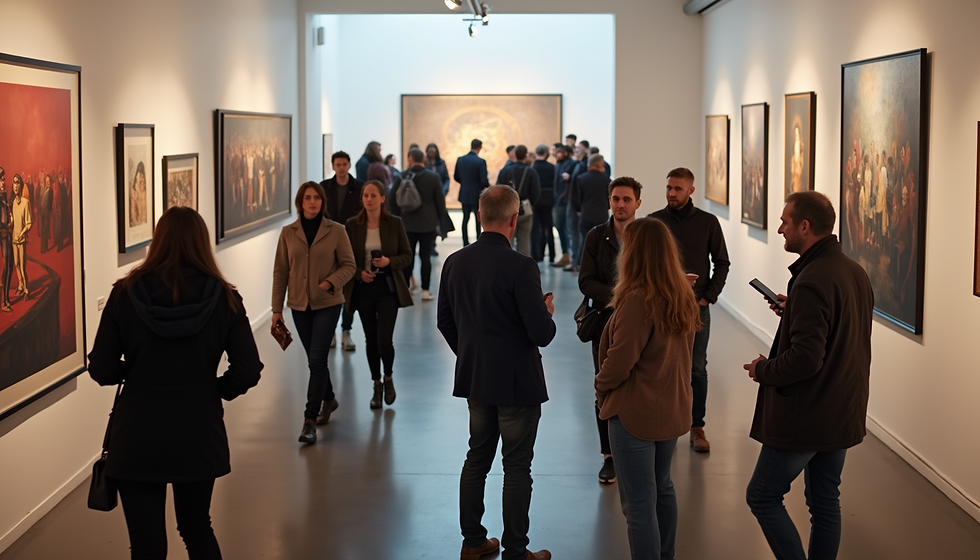Feminist Art Activist: Speaking for the Marginalised
- Shalu Yadav
- Aug 29
- 3 min read
“I bark through my work to not make any significant changes, but to break the midnight slumber, calling it Midnight woof-woof,” says Portia Roy.
Portia Roy is a Feminist art activist and visual artist from Bengal, India. Her work goes beyond the canvases, acting as both a mirror and a critique of society. She calls herself “a stray dog on the streets of India.” Instead of romanticising struggles, she makes it the spirit of her work, shaping her ideas. She does not claim to bring significant changes, but hopes her art becomes impossible to ignore in the stillness of the night.
Childhood & Seed of Protest
Roy grew up in a small town, where her father was an active member of the Communist Party and conversations about equality, justice, and human rights were common around the tea table. Stories from her grandmother about partition, migration, and survival added to her understanding of struggle and resilience. She spent her nights reading writers like Dostoevsky, Kafka, Tagore, and the Hungry Generation poets of Bengal.
Roy faced molestation more than once at a young age, making her question the safety and dignity of women in society. She realised something unsettling: If she, with relative privilege, could face such realities, she wondered what life was like for those with fewer protections.

These ideas and stories became a natural part of her upbringing, shaping how she saw the world. Over time, they grew into the root of her art, a way to process her experiences and protest against the injustices she saw.
Kala Bhavana and Colours of Chennai
At Kala Bhavana in Shantiniketan, Roy discovered her interest in relief printmaking. She was drawn to woodcut but soon began exploring beyond its limits. She started combining the details of wood engraving with the fluid nature of painting.
While in Chennai, the burst of colourful city life added to her artistic practices. From its architecture to the vibrant sarees of women who worked with confidence and independence. She saw them fishing, selling their catch, and running stalls on the beach.
Today, her figurative works on plywood are colourful, layered and full of stories. This fusion has given her a visual language of her own that amplifies marginalised voices and points to injustices that are often overlooked.

Protesting through her Art
Roy infuses “Protest Art” with the pop of Indian colours and motifs. Two of her significant works reflect her commitment to telling both local and universal stories of resistance.
She Resists: Inspired by the Adivasi song Gaon Chodab Nahi from Jharkhand, the piece embodies the refusal to give up. She created a powerful figure of a woman in eternal resistance. The work acknowledges that fight, a symbol of strength echoed in women worldwide.
Love at the Time of Revolution: Created during the 2019 Amazon fires, this work was inspired by an image of an indigenous mother holding her baby in one hand and raising the other in protest. Roy reimagined it with an Indian aura, reflecting on the dual role of women as protectors and fighters.
Boldness of her Woodcut Art
Roy works mainly with woodcut engraving, a medium that has long been linked to social commentary. She’s drawn to its raw, hands-on quality, where every line she carves feels intentional, carrying stories that are often left unheard. Her work combines familiar Indian motifs with themes of struggle, strength, and resistance.
For her, art is not about painting a pretty picture but starting conversations that many shy away from. Her practice is rooted in empathy and advocacy, providing space for voices and stories that are often overlooked.
Artlune is more than a gallery; it's a movement to showcase the voices of emerging and mid-career artists from South Asia.
For more information, contact us at admin@artlune.com or call +91 9899187125 (India), +44 743 693 3096 (UK)









